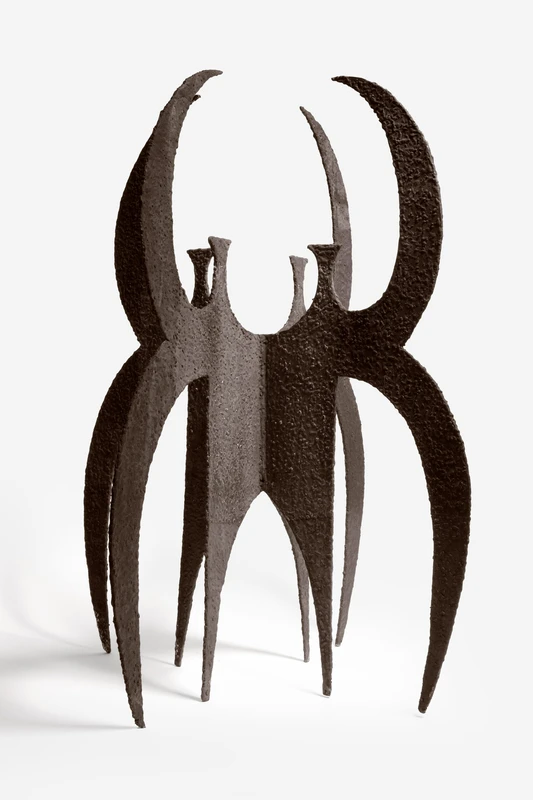Egon Altdorf
17 Jun-26 Nov 2023


Henry Moore Institute is delighted to present a display of work by German artist Egon Altdorf (1922-2008), programmed to mark seventy years since the international sculpture competition to design a Monument to the Unknown Political Prisoner was organised by the Institute for Contemporary Arts, London.
The competition promoted world-wide interest in contemporary sculpture and commemorated all who had ‘given their liberty in the cause of human freedom’. It attracted 3,500 entries by artists from fifty-seven countries and Egon Altdorf was one of three prize-winners in the German preliminary competition. Altdorf’s work was shown in the final exhibition at Tate, London in 1953. This display focuses on Altdorf’s work immediately following his competition entry.
Rarely exhibited, believed to be lost or destroyed, Altdorf’s work was rediscovered after his death by his son, prompting a reassessment of his achievements and contribution to post-war art and architecture. This will be the first time that his work has been shown in the UK since it was produced during the 1950s.
Following the competition, Altdorf went on to achieve success as a printmaker, stained-glass artist and poet as well as a sculptor. He visited the UK as part of his competition prize in 1953, which he described as the most important event in his creative development.
The display will include three of Altdorf’s steel sculptures, which have never been seen in the UK before, along with a selection of his woodcuts, etchings and drawings.
These show both the strength of Altdorf’s design and printmaking skills along with the clear influence of the British artists he met during his time in the UK, including Henry Moore (1898-1986), Eduardo Paolozzi (1924-2005), Lynn Chadwick (1914-2003) and Reg Butler (1913-81), who won the grand prize in the Monument to the Unknown Political Prisoner competition.
Altdorf grew up as a Catholic and often made work with religious or spiritual symbolism. One of his most significant projects was designing the interior scheme for the new synagogue in Wiesbaden, Germany, built to replace the synagogue destroyed in Kristallnacht in 1938 and now widely regarded as an important example of post-war religious architecture. A film will be on display in the Institute celebrating this project.
“Egon Altdorf was for many years Wiesbaden’s best kept secret. This will be the first time his work has been seen outside Germany since the 1950s. What a wonderful opportunity to celebrate his art and poetry and revisit the inspiration of meeting Henry Moore.” — Dorian Crone, Egon Altdorf’s son
Egon Altdorf was born in Pomerania in 1922 and moved to Berlin as a child. His initial artistic inspiration came via his grandfathers, one a potter and the other a blacksmith. Altdorf was drafted into the army in 1941 and was later captured in Tunisia and interned as a prisoner of war in Camp Mexia, Texas.
Altdorf was among the few prisoners who completed the intensive Getty-Wetherill education programme at Rhode Island, intended to create administrators to assist US military government personnel to reconstruct post-war Germany. On his release he chose Wiesbaden as a destination, knowing that he had lost his parents and home in Berlin.
In addition to his woodcuts and a small body of sculpture, Altdorf’s outstanding achievement was to design the interior, including sculptural fittings and several stained-glass windows, of the new synagogue in Wiesbaden, 1966. Although not a member of the Jewish community, Altdorf was chosen in 1953 to make a stone monument, which he inscribed ‘The world’s conscience is love’, commemorating Wiesbaden’s old synagogue destroyed on Kristallnacht in 1938. The new synagogue is now recognised as a highly significant example of post-war synagogue architecture in Germany.